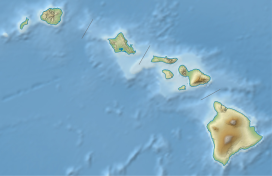In the article below, the topic of Kaʻala will be addressed from a broad and detailed perspective. Kaʻala is a topic of great relevance in today's society, which has sparked numerous debates and controversies in different areas. Over the last decades, Kaʻala has gained special importance and has been the subject of studies and research by experts in the field. In this article, various aspects related to Kaʻala will be explored, such as its origin, evolution, impact on society, and possible solutions or alternatives to deal with it. In addition, different approaches and points of view on Kaʻala will be analyzed, in order to offer a complete and enriching vision of this topic that is so relevant today.
This article needs additional citations for verification. (March 2013) |
| Kaʻala | |
|---|---|
 Mt. Kaʻala, as seen from near Dole Plantation. | |
| Highest point | |
| Elevation | 4,025 ft (1,227 m) |
| Prominence | 4,025 ft (1,227 m) |
| Coordinates | 21°30′25″N 158°08′34″W / 21.50694°N 158.14278°W |
| Naming | |
| Language of name | Hawaiian |
| Pronunciation | Hawaiian pronunciation: [kəˈʔɐlə] |
| Geography | |
| Location | Oahu, Hawaii, US |
| Parent range | Waianae Range |
| Topo map | USGS Haleiwa |
| Geology | |
| Age of rock | 3.9 Ma |
| Mountain type | Plateau |
| Volcanic arc/belt | Hawaiian-Emperor seamount chain |
Kaʻala or Mount Kaʻala (pronounced [kəˈʔɐlə] in Hawaiian) is the highest mountain on the island of Oahu, at 1,227 metres (4,026 ft). It is a part of the Waianae Range, an eroded shield volcano on the west side of the island. The FAA maintains an active tracking station at the summit, which is closed to the general public and secured by the US Army which is stationed at the base of the mountain, at Schofield Barracks. The tracking station can be clearly seen from afar as a white, domed-shaped structure.
See also
- List of mountain peaks of the United States
- Evolution of Hawaiian volcanoes
- Hawaii hotspot
- Hawaiian–Emperor seamount chain
References
- ^ "Mt. Mount Ka'ala". Department of Forestry and Wildlife. State of Hawaii. Retrieved 2013-02-21.
- ^ "Ka'ala". Geographic Names Information System. United States Geological Survey, United States Department of the Interior. Retrieved 2009-12-23.

